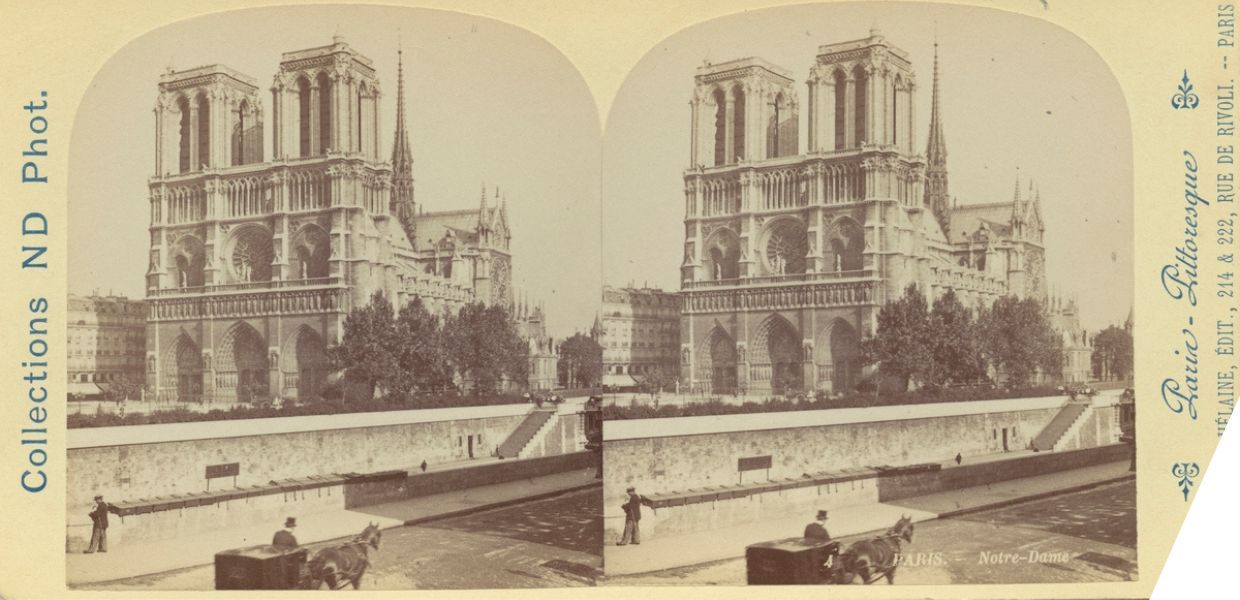On April 15, 2019 Notre-Dame in Paris caught fire. The images and videos of the famous cathedral burning and portions collapsing sped across the world. Once the ash settled, the world asked how the cathedral would be rebuilt. While much discussion focused on the famous aesthetics and ceiling including the wood and carpentry skills needed to accurately restore the cathedral, an element that went slightly under the radar, the sound of Notre Dame, was being tackled. Brian Katz, an acoustics researcher from CNRS and his team got to work the day after the fire. Using models and measurements made in 2014 to document the acoustics of Notre Dame along with prior acoustic measurements, texts and images, Katz’s team are ensuring that every step of Notre Dame’s restoration will ensure that the space sounds the same as it did before the destruction.
‘Heritage acoustics’ is a growing field of research within cultural heritage and the Notre Dame fire certainly brought its importance to the fore. In short, heritage acoustics uses different measurement techniques, in particular impulse responses to document how sound reacts in a specific space. Anyone who’s stepped into any cathedral or concert hall and clapped their hands or whistled and listened to the reverb trail off has, at a very elementary level, conducted an impulse response.
This intangible heritage brings an incredibly valuable level of documentation for heritage sites. For EuropeanaTech, who over the years have helped make great strides in the field of 3D heritage thanks to the hard work of Kate Fernie and the 3D Content in Europeana Task Force and Working Group, heritage acoustics is a logical topic to explore next, especially considering the continued improvement of audiovisual content playout on Europeana. Read on to discover a few different ways heritage acoustics can be used in different creative reuse endeavors.
Convolution reverb
Convolution reverb is a digital signal processing effect where one can input an audio signal - you playing guitar in your bedroom - and then in the computer apply the convolution reverb of the Sydney Opera House, making your bedroom guitar recording sound like it was being played in the Sydney Opera House.
The process of creating convolution reverb software relies on the same techniques used in heritage acoustics, taking multiple impulse responses at different spaces within a room. Convolution reverbs on the market today are provided by commercial companies like Altiverb by Audio Ease and are considerably expensive.
As heritage organisations and researchers begin to document more and more historic spaces and recreate spaces lost to time, they should consider adding the creation of convolution reverb VSTs (Virtual Studio Technology) in an open and inexpensive way to the project plan. This will allow artists from around the world to experience the unique historical acoustics of countless historic spaces all from their own computers and take this as inspiration to create new music and share it with even more people. The OpenAIR project is a great source of inspiration for this.
Augmented reality
Another powerful usage for acoustic models is to add deeper layers of detail to augmented reality instances. This process is known as auralisation - the audio version of visualisation and is already being done by many initiatives. For instance, the Ghost Orchestra to celebrate the 850th birthday of Notre Dame in Paris or the lost performances by the University of Edinburgh of a 1512 Easter celebration performance at Linlithgow Palace. Another initiative, Virtual Music Heritage, offers a short time machine, back to a specific day in the life of Jean de Okeghem, master of the royal choir at Collegiate Saint Martin in Tours, France back in 1480. The Collegiate Saint Martin was destroyed in the 17th century, but with combined 3D reconstruction and auralization, one can join Okeghem and the choir for practice in the beautiful building.
These are just a handful of examples. In practice, acoustics offer the potential to not only provide a deeper and often overlooked level of documentation when it comes to preservation, but the creative reuse potential while either immediate or for enrichment is boundless. As we lose more architectural landmarks to climate change, war, urbanisation or simple disrepair, let’s not forget that a space’s character is not just what it looks like but also how it sounds.
Find out more
To find out more heritage acoustics, watch a EuropeanaTech webinar on the topic! You can also join EuropeanaTech, the community of experts, developers, and researchers from the R&D sector within the greater Europeana Network Association, to contribute to - and be the first to hear about - discussions in this area!


